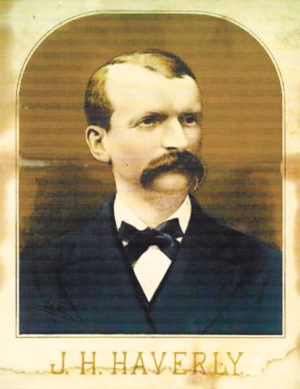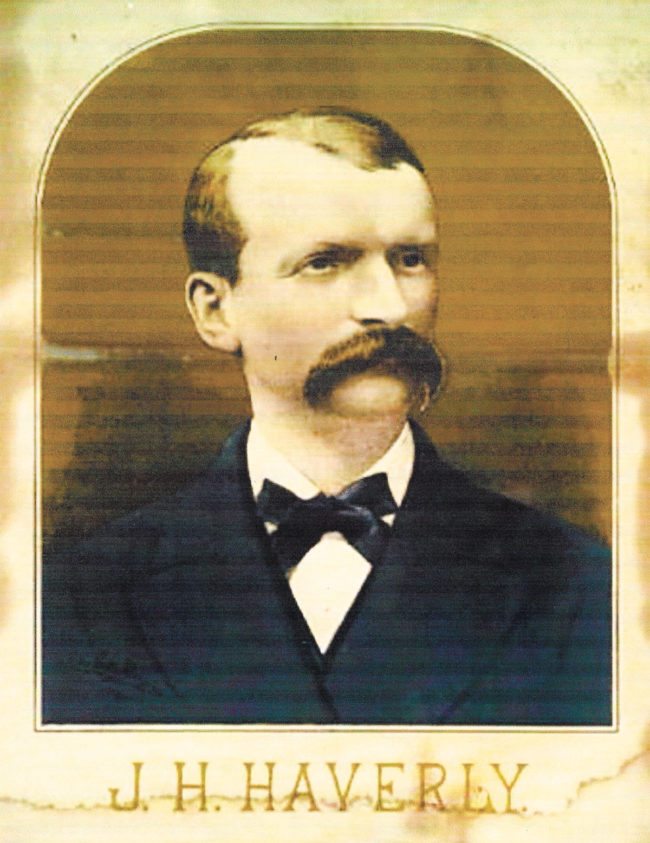 By Jan MacKell Collins
By Jan MacKell Collins
“Jack Haverly, Jack Haverly I wonder where you are. Are your fortunes cast with Sirius, or ‘neath some kindlier star?” – “Memories of Jack Haverly” by Eugene Field, the New York Times circa 1901
We all know certain people in our lives who never seem to hold onto their money, no matter how much they make. During the 1800s, Jack Haverly was just such a person.
Born Christopher Heverly in Pennsylvania in 1837, the budding capitalist first began working his way up in the world by selling peanuts and candy on passenger trains. He went on to work as a “baggage smasher” for the railroads and also as a tailor’s apprentice before finding where his heart truly belonged: the theatre.
Haverly’s first variety theatre, complete with a saloon, opened in Toledo, Ohio in 1864. As it turned out, Haverly made a great showman. His first performing troupe at the theatre, “Haverly’s Minstrels,” drew record crowds. A misspelling on a poster changed his last name, and he became known in entertainment circles as Jack Haverly.
Shortly after Haverly’s Minstrels debuted, Haverly acquired various partners and began taking his shows on the road. His travels took him across America and north to Canada. Along the way he married one of his showgirls, Sara Hechsinger of the famous Duval Sisters. When Sara died in 1867, he married her sister Eliza.
For over a decade, Haverly bought and sold numerous theaters and headed up an amazing thirteen performing troupes. He seldom had trouble finding investors, even as he became known as a compulsive gambler and speculator who sometimes threw his money away as quickly as he made it. He also had a bad habit of filing for bankruptcy, yet somehow always managed to stay afloat. Newspapers lost count of his failings and resurrections, but his friends never hesitated to loan him money when he needed it. They knew he would pay it back the next time fortune smiled upon him again.

